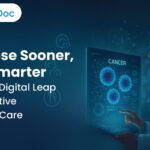Introduction: A Global Shift in Oncology Engagement
Oncology marketing has evolved rapidly in the past decade. Gone are the days when conferences, journals, and sales visits defined communication between pharmaceutical brands and oncologists. Today’s landscape is digital, fast-paced, and shaped by the information needs of highly specialized, globally connected cancer professionals.
The stakes are high: the global oncology drug market is projected to exceed $500 billion by 2027, and physicians are expected to adopt evidence-based therapies faster, more precisely, and with ongoing education. In this environment, pharmaceutical marketers must move beyond awareness and toward clinical alignment.
This article explores how oncology marketers can leverage global digital trends to build effective, ethical, and educational campaigns that support clinical care and foster trust. With insights into preferred platforms, content types, and strategic priorities, we provide a roadmap to engage oncologists digitally across borders and practice settings.
Understanding the Global Digital Preferences of Oncologists
Before launching digital campaigns, pharma teams must ask:where do oncologists consume content, and what format is most valuable to them?
A recent global survey showed the following breakdown of preferred digital channels:
Key insights:
- Email remains the dominant channel due to its asynchronous convenience and ease of access.
- Medical portals and webinars offer credible, in-depth education, especially during product launches or post-conference reviews.
- Social media (e.g., LinkedIn, YouTube) is increasingly used by younger oncologists for digestible updates and networking.
- Mobile apps see growing usage, particularly in APAC region for clinical calculators or guideline summaries.
The implication? Campaigns should not be channel-specific but omnichannel,tailoring content for each digital avenue, from long-form whitepapers to 90-second clinical reels.

What Kind of Content Do Oncologists Actually Want?
Pharma brands often assume that data-heavy PDFs or flashy brand visuals suffice. However, global oncologists consistently show preferences for content that helps them treat better and faster.
Top content types:
- Clinical guidelines and pathways (35%): These form the backbone of modern evidence-based practice. Simplified or interactive versions (e.g., ASCO/NCCN/ESMO) make them especially valuable.
- Case studies (25%): Real-world dilemmas shared by peer especially in video or slide formats are among the most impactful tools.
- Explainer videos (20%): Short videos on new mechanisms of action, side effect profiles, or therapeutic updates help with both HCP understanding and patient communication.
- Drug updates (20%): Especially important in emerging markets or rural settings where access to in-person detailing is limited.
Pharma marketers must curate content not for “volume of messaging” but for clinical usability, keeping oncology’s precision nature at the core.

Tailoring Campaigns by Global Region
Digital behaviors and expectations vary widely across global markets:
- North America & Western Europe: Prefer professionally curated CME modules, journal-led discussions, and KOL-led webinars.
- Asia-Pacific: Higher reliance on mobile apps and messaging platforms (e.g., WeChat, WhatsApp) for rapid consultation tools.
- Latin America & Africa: Appreciate multilingual video content, simplified dosing infographics, and flexible access due to infrastructural limitations.
Global campaigns must therefore
- Translate not just language but clinical context.
- Customize content format to fit bandwidth and platform realities.
- Use regional micro-influencers or KOLs to build trust.
Why Strategy Matters: Goals of Digital Pharma Campaigns
It’s easy to get lost in metrics like clicks or impressions. But true impact in oncology comes when campaigns align with strategic goals that support the practice; not just the brand.
Top objectives:
- Education (40%): Helping HCPs understand the latest in diagnostics, treatment pathways, or supportive care options.
- Awareness (30%): Especially crucial during new product introductions or label expansions.
- Brand recall (20%): Aimed at ensuring the brand remains top-of-mind at the decision-making moment.
- Engagement (10%): Building a loop of two-way interaction, such as chatbot Q&A or downloadable clinical tools.
Marketers should define success not just as reach but repeat clinical interaction, measured by content reuse, time-on-page, and post-download action.

Innovation in Action: Successful Global Campaign Examples
Case 1: Immunotherapy Pathway Builder (US & EU)
A leading pharma company launched an interactive tool allowing oncologists to choose treatment based on tumor type, biomarker status, and line of therapy. Accessible via email and mobile app, it saw:
- 3x longer average session time
- Over 60% tool reuse within 4 weeks
- 45% reported faster clinical decisions
Case 2: WhatsApp-based Chemotherapy Tolerance Checklist (India & MEA)
Developed by an MSL-led content team, this checklist helped oncologists manage and counsel patients starting chemotherapy. Delivered in Hindi, Arabic, and English, it led to:
- 70,000+ forwards in 3 months
- Significant spike in physician-initiated rep calls
- Zero brand mentions, 100% value-driven impact
These show that clinical enablement builds loyalty and often outperforms brand-first marketing in oncology.
Metrics That Matter in Oncology Digital Marketing
Forget vanity metrics. Oncology digital campaigns should track:
- Tool downloads and reuse (Did they return?)
- Average time per content asset (Was it truly read/watched?)
- Post-download actions (Survey submissions, HCP rep calls)
- Peer-sharing behavior (Forwarded to other oncologists?)
- Sentiment analysis (Did it build trust?)
Remember: the success of a campaign is determined not just by “how many saw it,” but by “how many changed their clinical behavior because of it.”
Final Thoughts: Personalize, Prioritize, and Partner
Digital pharma marketing for oncology must transition from brand-led to practice-supportive. That means:
- Personalized content based on sub-specialty (lung vs breast vs hematologic)
- Prioritized formats that work for that region (infographics for India, toolkits for Germany, mobile content for Africa)
- Partnerships, not promotions with medical societies, micro-influencers, and academic voices
This is not just about selling molecules, it’s about enabling better medicine. And in oncology, that’s the most powerful message of all.
The Oncodoc team is a group of passionate healthcare and marketing professionals dedicated to delivering accurate, engaging, and impactful content. With expertise across medical research, digital strategy, and clinical communication, the team focuses on empowering healthcare professionals and patients alike. Through evidence-based insights and innovative storytelling, Hidoc aims to bridge the gap between medicine and digital engagement, promoting wellness and informed decision-making.



